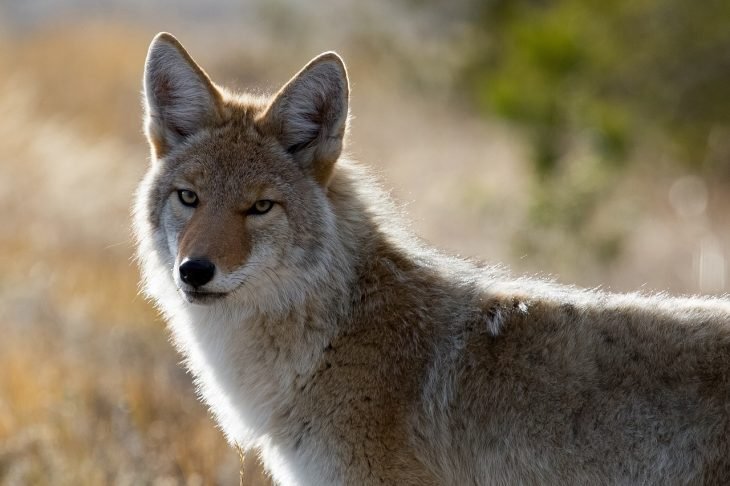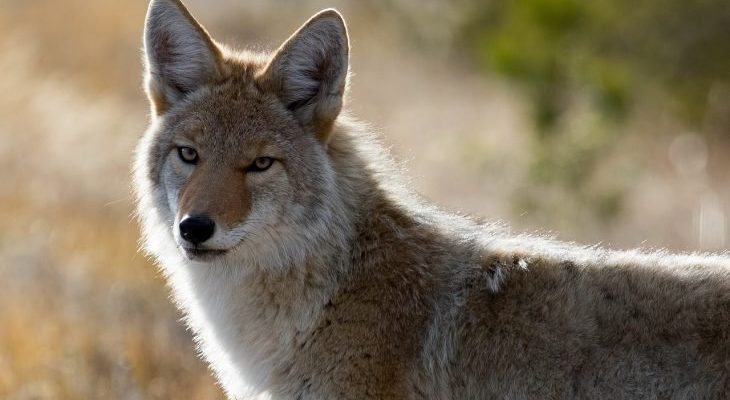
In this article, we’ll dive into *ten captivating facts about the coyote* that may surprise you. From their social behavior to their ability to communicate, coyotes are often depicted as cunning tricksters in folklore, but their real lives are even more fascinating. Let’s explore what makes these animals both remarkable and important in our ecosystems.
1. Coyotes Can Adapt to Almost Any Environment
One of the most amazing things about coyotes is their ability to adapt to various habitats. They thrive in deserts, mountains, forests, and even cities. Think of them as nature’s survivalists. Their versatility allows them to hunt for food in urban settings—like raiding garbage cans or snatching up small pets—while still being fully capable of living in the wild.
Coyotes have stretched their range across North America. Originally, they roamed the plains of the Western United States, but they’ve since expanded into urban areas of cities like Los Angeles and Chicago. The ability to adjust their diet based on what’s available is a huge factor in their success. They can eat anything from rodents and rabbits to fruit and leftovers from human meals.
This adaptability also extends to their social behavior. In urban environments, you might find them forming smaller packs or even living solitary lives depending on the available resources. Here’s the thing: they’re really good at making the most of whatever space they find themselves in.
2. Their Vocalizations Are More Than Just Howls
When you think of the coyote, you probably think of that classic howl echoing through the night. While howling is indeed a part of their communication, coyotes have a whole range of vocalizations. These include yips, barks, and even yowls. Each sound serves a different purpose, like signaling danger, calling to others in the pack, or marking territory.
Imagine being at a campfire in the woods, and suddenly you hear a coyote chorus. It’s not just a random sound; it’s a carefully orchestrated concert. They often howl together as a way to strengthen pack bonds and communicate their location to one another. Sometimes, their calls can even travel several miles, acting as a sort of GPS for coyotes wandering through their territory.
The vocalizations also vary based on the environment. In urban settings, coyotes might adjust their calls to be heard over the noise of traffic and other sounds. This level of flexibility is truly impressive and shows how keenly aware these animals are of their surroundings.
3. Coyotes Are Significant Role Players in Ecosystems
Coyotes play a crucial role in maintaining the balance of their ecosystems. As both predators and scavengers, they help control populations of rodents and other small mammals. This is vital because overpopulation of these animals can lead to agricultural issues and the spread of disease.
Think of coyotes as nature’s pest control—without them, certain species could flourish unchecked. They often hunt alone or in small packs, making them efficient hunters. This hunting strategy allows them to target weak or sick animals while keeping the overall population health in check.
Additionally, coyotes also help in seed dispersal. When they eat fruits, the seeds pass through their system and are eliminated far from the parent plant. This process contributes to new growth in different areas, supporting plant diversity.
4. They Have a Unique Social Structure
Coyotes often live in small family groups or packs. A typical pack usually consists of a breeding pair and their pups. The breeding pair, often called the alpha male and female, leads the pack and makes decisions about hunting and territory. However, you might be surprised to learn that these groups can also be quite flexible.
For instance, older pups may stay with the pack to help raise younger siblings or assist in hunting. In fact, family dynamics can shift based on what’s best for survival. If food is scarce, a pack might split up to increase their chances of finding meals.
This adaptability highlights their intelligence and social sensitivity. Here’s the thing: while they have a structured social system, it isn’t rigid. It’s more like a dance where everyone knows their part but can improvise when needed.
5. Coyotes Are Extremely Resourceful Hunters
When it comes to hunting, coyotes have a reputation for being cunning and opportunistic. They’re not picky eaters, which is a huge advantage. Whether they’re chasing after small mammals, scavenging carrion, or even hunting larger prey like deer in a pack, they display a remarkable range of hunting techniques.
In urban areas, they might hunt pets or rummage through trash cans. It’s interesting to think about how they’ve evolved to take advantage of human environments. For example, a coyote might watch a neighborhood closely, learning the patterns of pet owners during evening walks and using that knowledge to find easy meals.
Their hunting strategies can vary based on their environment, too. In open areas, they might use speed and endurance to chase down prey, while in denser regions, they may rely more on stealth and teamwork with other coyotes. That’s a great example of how they adapt their skills to fit their surroundings.
6. Coyotes Have a Rich Cultural Significance
Throughout history, coyotes have held a special place in many cultures. In Native American mythology, they are often seen as tricksters—wise, clever, and sometimes mischievous. This duality reflects how people perceive coyotes: both as a nuisance and as fascinating creatures.
Stories about coyotes vary widely among tribes. In some tales, coyotes are heroes, while in others, they teach important lessons about humility or cunning. For example, a famous story from the Lakota tribe portrays the coyote as a creator and a bringer of life.
These narratives serve as a way to connect with nature and understand the role of coyotes in the ecosystem. It’s a reminder that humans and animals are intertwined and that each has lessons to share about survival and coexistence.
7. Coyotes Are Highly Intelligent Animals
Coyotes are incredibly smart creatures. Their intelligence shines in their ability to adapt, learn, and problem-solve. They use various tactics to find food, navigate their territories, and avoid dangers. For example, some coyotes have been observed cleverly working together to corner prey, showcasing their ability to strategize.
Interestingly, studies have shown that coyotes can also learn from their experiences. They’re quick to adjust their behavior based on what they’ve encountered before. If a particular hunting method fails, they’ll try something different next time, highlighting their resourcefulness.
This intelligence is one reason why they can thrive in close proximity to humans. They learn to avoid traps and snares, adapt their hunting schedules, and even change their vocalizations to blend in with city noise. It’s this cleverness that makes them both fascinating and sometimes challenging neighbors.
8. Their Reproduction Cycle Is Intriguing
Coyotes usually mate once a year during the winter months. The gestation period for a female coyote lasts about 63 days, typically resulting in a litter of three to seven pups. Here’s the thing: the dynamic during this period is quite fascinating. Both parents participate in caring for the pups, which is different from many other wild animals.
Once the pups are born, they depend heavily on their parents for food and protection. It’s common for the whole pack to help raise the young, with older siblings playing an active role. This helps the pups learn essential survival skills.
As the seasons change and the pups grow, they’re taught how to hunt and communicate. By the fall, they’re often ready to leave the pack and try their paws at independence, although some may stay behind to assist in future litters. It’s a beautiful cycle of growth and learning that showcases the strong family bonds within coyote packs.
9. They Are Not Just Lone Wolves
The saying “lone wolf” doesn’t apply to coyotes. While they can be solitary, they often prefer the company of others. Many people think of coyotes as lone hunters, but in fact, they thrive in packs. This social structure gives them advantages when hunting or defending territory.
In urban areas, you might spot solitary coyotes scavenging alone, but that doesn’t mean they prefer it. Rather, it’s a response to human encroachment into their habitats. Packs help them coordinate better during hunts and raise more pups, so when the opportunity arises, they’ll team up for efficiency.
Within the pack, there’s often a clear hierarchy. The alpha male and female lead, while other members play different roles. This social structure not only supports hunting but also ensures the survival and continuity of their lineage, showcasing their adaptability and social needs.
10. Coyotes Are Important Environmental Indicators
Coyotes are often seen as *keystone species*, meaning their presence (or absence) significantly impacts other species in the ecosystem. They help maintain healthy populations of prey animals, which in turn influences plant life and the overall environment. This balance is crucial for a thriving ecosystem.
Observing coyote populations can give scientists important clues about the health of their environments. If coyote numbers are high, it often indicates a robust ecosystem. If they decline, it may signal problems like habitat loss or a decrease in prey populations.
Conservationists often look to coyotes as a measure of ecological health. Their adaptability and intelligence make them valuable subjects for studying how wildlife can coexist with human development. Understanding these dynamics helps inform conservation efforts and promotes healthier ecosystems overall.
Coyotes are truly remarkable animals that deserve our respect and understanding. From their incredible adaptability to their unique social behaviors, they’re more than just the cunning creatures of legend—they play vital roles in the natural world. By appreciating their role in our ecosystems, we can foster a deeper connection with the wildlife around us.
So, the next time you hear a coyote howl in the distance, take a moment to appreciate the fascinating life and skills of this remarkable animal!

